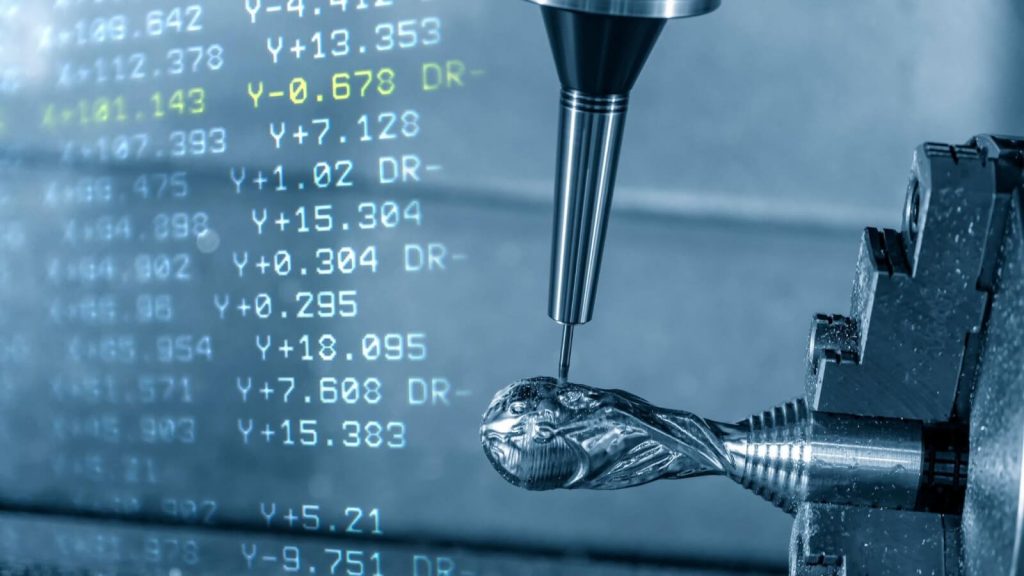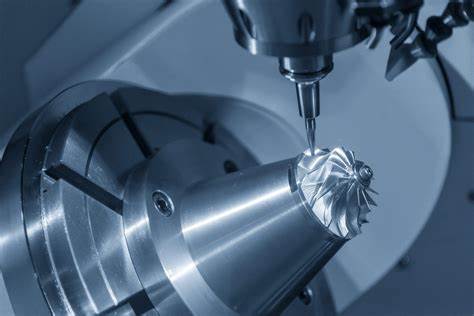Over time, CNC machines have gained popularity across most manufacturing sectors. These devices automate manufacturing processes such as: cutting, drilling, milling, and turning, and they do it all using computer numerical control (CNC) technology. CNC machines allow for the highly accurate and precise production of intricate designs and parts. There are several kinds of CNC machines, but most fall under the 3-axis or 5-axis categories. These two differ in their axes of motion capabilities. This article will discuss the advantages and disadvantages of 3-axis and 5-axis CNC machines.
What Is CNC?
CNC (Computer numerical control) refers to the use of computers to direct the motion of manufacturing machinery. Most CNC machines perform functions that are also found on manual machining devices but depend on a computer program to direct the motion instead. That makes the cutting tool’s movements very precise and generally results in higher-quality parts than those made with manual drill presses, lathes, etc.
What Is a 3-Axis CNC?
A 3-axis CNC machine is one that performs machining operations by moving its tool or the part along the X, Y, and Z axes. The cutting tool can be moved anywhere along the horizontal (X-Y) plane and cut into parts to specified depths (Z-axis motion). Figure 1 is an example of a 3-axis CNC machine:

What Can a 3-Axis CNC Do?
A typical 3-axis CNC machine is capable of carrying out a variety of machining tasks, including: cutting, drilling, and milling. Others are designed as CNC lathes. However, in terms of part complexity, the constraint of those three axes means the machine has some distinct limitations. The best 3-axis machines are used to produce parts with straightforward geometries and minimal design or detail requirements. 2D and 2.5D parts are the best targets for 3-axis CNC machines.
What Are the 3-Axis CNC Examples?
Examples of 3-axis CNC devices are:
These machines are frequently employed in sectors like automotive, aerospace, and electronics.
What Are the Advantages of 3-Axis CNC?
The advantages of 3-axis CNC machines are listed below:
What Are the Disadvantages of 3-Axis CNC?
The disadvantages of 3-axis CNC machines are:
Does the 3-Axis CNC Not Capable of Creating 3D Objects?
While 3-axis CNC machines can create 3D objects, there are some restrictions. 3-axis CNC machines can produce 3D parts with clear and simple geometries but not those with complex geometries and finely detailed designs.
What Is a 5-Axis CNC?
A 5-axis CNC machine performs machining operations along five axes of motion. It can move along the three linear axes (X, Y, and Z) and rotate around the other two axes (A and B). This expanded range of motion enables the machine to generate intricate geometries. Figure 2 is an example of a 5-axis CNC machine:

What Can a 5-Axis CNC Do?
A 5-axis CNC can create geometries that demand multiple angles and contours. It can move the cutting tool along five axes, leading to smoother surfaces and more precise parts. A 5-axis CNC machine can also perform continuous milling, which enables the cutting tool to follow the material’s curvature and produce fewer marks and steps.
A 5-axis CNC machine can be used to create parts such as: impellers, turbine blades, molds, and aerospace components. For instance, it is used in the aerospace industry to create intricate shapes for aircraft engine components. 5-axis capability is also important for medical implants and prosthetics.
What Are the 5 Axis CNC Examples?
Some examples of 5-axis CNC machines include:
What Are the Advantages of 5-Axis CNC?
Listed below are the advantages of 5-axis CNC machines:
What Are the Disadvantages of 5-Axis CNC?
Listed below are the disadvantages of 5-axis CNC machines:
Does 5-Axis CNC Have No Limitations To Angle?
A 5-axis CNC machine can mill materials at nearly any angle, but it does have some restrictions. The length of the cutting tool, the nature of the material being milled, and the reach of the machine itself all affect the possible angles and dimensions. Additionally, the cutting tool becomes less stable at more extreme angles, which may have an impact on precision.
What Is the Difference Between 3-Axis and 5-Axis CNC?
A 3-axis CNC and 5-axis CNC differ in their ability to orient and move the cutting tool along multiple axes. A 3-axis CNC machine is capable of moving its cutting tool along the X, Y, and Z axes. A 5-axis machine, on the other hand, can move the cutting tool along the X, Y, Z, A, and B axes.
The machine’s price is another difference between the two. Of the two, the 3-axis version is far cheaper to buy, program, and operate. The cost per part is thus often lower as well.
Another critical differentiating factor is the ease with which you can create and manipulate complex shapes. Even in complex geometries, deep cuts are possible with 5-axis machines. You can work on all sides of your workpiece without manually rotating it, thus improving productivity. A 3-axis machine, on the other hand, needs numerous adjustments to help the machine cut complex geometry.
How Much Does 5-Axis CNC Cost Compare to 3-Axis CNC?
Prices for 3-axis CNC devices range from $25,000 to $50,000 while 5-axis go from $80,000 to over $500,000. The costs vary depending on whether they are used for entry-level or production-level work.
How Are 3-Axis CNC and 5-Axis CNC Programmed?
Programming for both 3- and 5-axis CNC work is done manually by professionals. However, programming 3-axis machines is easier than programming 5-axis machines, so the latter will usually warrant a higher-paid programmer.
Is the 3-Axis CNC a Good Starter Investment Than the 5-Axis CNC?
Yes, a 3-axis CNC is a better starter investment than a 5-axis CNC. It is more affordable in terms of purchase, development, and upkeep costs.
Do CNC Machines Use a Lot of Electricity?
Yes, CNC machines draw quite a bit of power. A 20-hp conventional CNC machine with a 7 kw/hr rating can run a monthly power bill of around $1,400. However, some CNC machines are more energy-efficient than others.
Summary
This article presented 3-axis and 5-axis CNC, explained what they are, and discussed the advantages and disadvantages of each. To learn more about 3-axis and 5-axis CNC, contact Proto MFG representative.
Proto MFG provides a wide range of manufacturing capabilities, including CNC machining and other value-added services for all of your prototyping and production needs. Visit our website to learn more or to request a free, no-obligation quote.